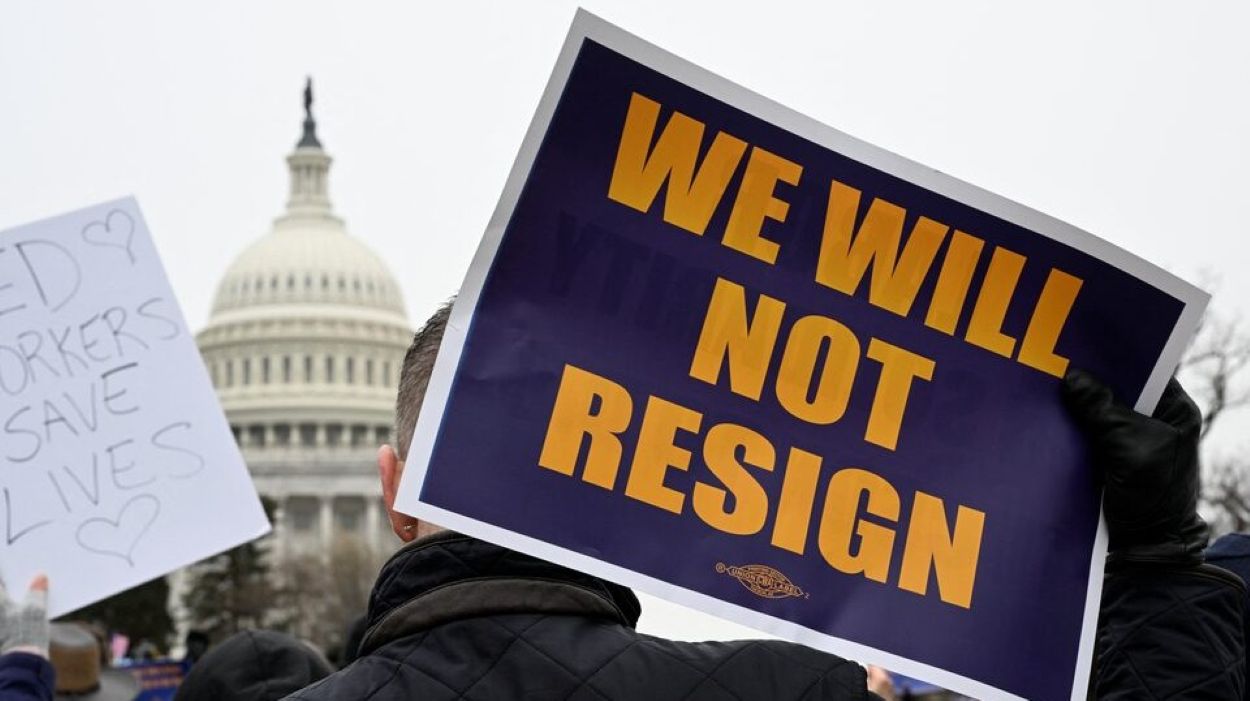Over 154,000 U.S. federal employees are opting to quit jobs, marking the largest loss of government talent in a single year in decades. This unprecedented wave of departures, driven by the Trump administration’s buyout initiative, has raised serious concerns about potential disruptions to vital services, including weather forecasting, food safety, and space exploration.
The buyouts are part of President Donald Trump’s push to shrink the 2.3 million-strong civilian workforce. They combine financial incentives with threats of layoffs. Resignations begin Tuesday for workers in the deferred resignation program. Many of these workers have been on paid leave since accepting offers months ago. By year’s end, the administration projects a total reduction of 300,000 jobs—12.5% of the workforce. This could potentially save $28 billion annually, according to the Office of Personnel Management (OPM).
Don Moynihan, a public policy professor at the University of Michigan’s Ford School, warns about the departure of experienced civil servants. He says it poses a threat to government efficiency. “It takes years to build expertise for complex programs,” he says. “Losing that knowledge is nearly irreversible.” Union leaders and former employees echo this sentiment. They note the challenges in maintaining public services.
US government faces brain drain as 154,000 federal workers exit this week https://t.co/7x1Apx4zvP https://t.co/7x1Apx4zvP
— Reuters (@Reuters) September 30, 2025The federal workforce, less than 1.5% of total US employment, spent $359 billion on civilian pay and benefits in 2023. While the cuts may not spike national unemployment, the concentrated loss of specialised skills could have lasting impacts.
Read: Intel to Outsource Marketing to Accenture, Signals 20% Layoffs in 2025
The buyouts affect a wide range of agencies:
- National Weather Service (NWS): Nearly 200 staff, including meteorologists and technical experts, took buyouts, disrupting forecasting operations. Tom Fahy of the NWS Employees Organisation calls it “massive disruption nationwide.” NOAA, which oversees NWS, says it’s hiring to maintain safety and fiscal responsibility.
- NASA: Approximately 4,000 employees, including top engineers and scientists, exited via buyouts in January and April. Matt Biggs, president of the International Federation of Professional and Technical Engineers, warns that these losses threaten NASA’s global leadership. NASA emphasises its focus on moon and Mars missions, assessing the needed skills.
- Agriculture and Health: The Agricultural Research Service lost 1,200 staff members (17%), including a specialist in detecting fungal toxins. This risks compromising food safety, according to Ethan Roberts, a union leader. At the Department of Health and Human Services, 5,900 jobs were cut. This includes 3,500 at the FDA and 2,400 at the CDC. An anonymous FDA employee notes delays in the National Youth Tobacco Survey due to staffing shortages. HHS insists critical functions remain intact.
The cuts surpass reductions under President Bill Clinton. He trimmed 430,000 jobs (20%) over an eight-year period. This occurred amid a tech-driven economic boom that led to the creation of 22 million private-sector jobs. Trump’s strategy, backed by advisor Elon Musk, targets perceived inefficiencies. OPM’s McLaurine Pinover praises the program as “incredible relief for taxpayers.” Democrats, however, call the cuts reckless.






